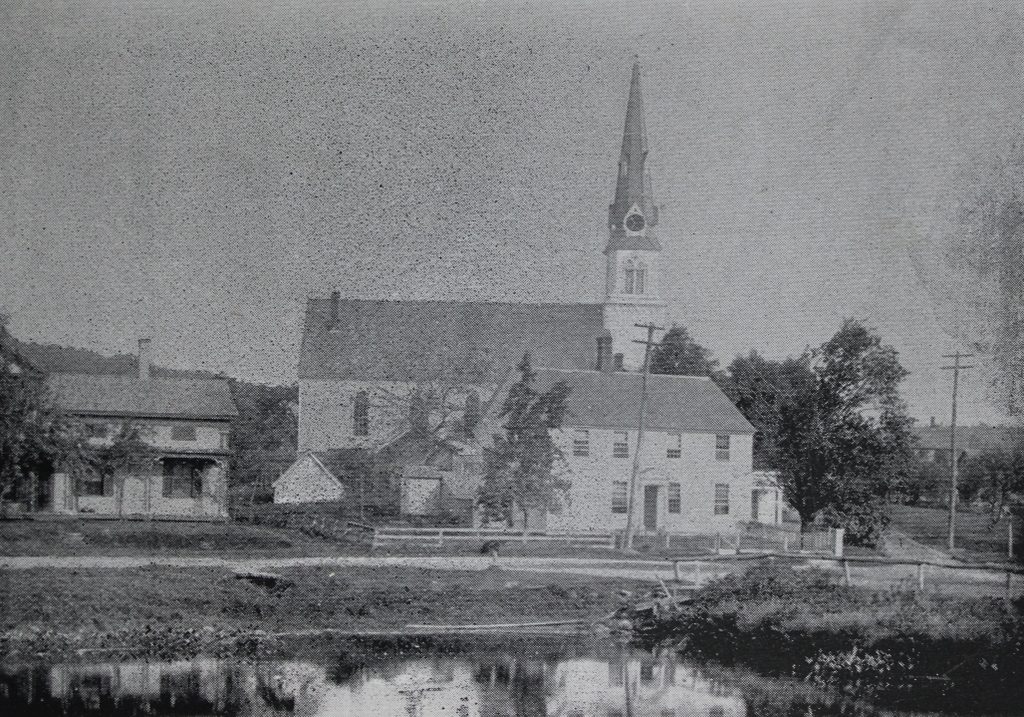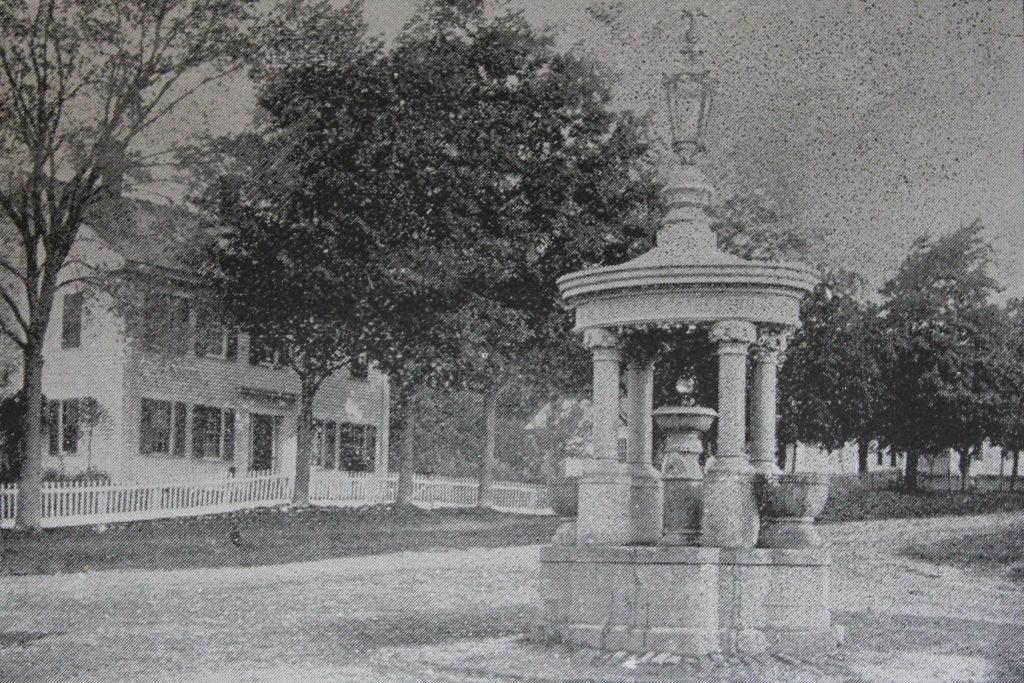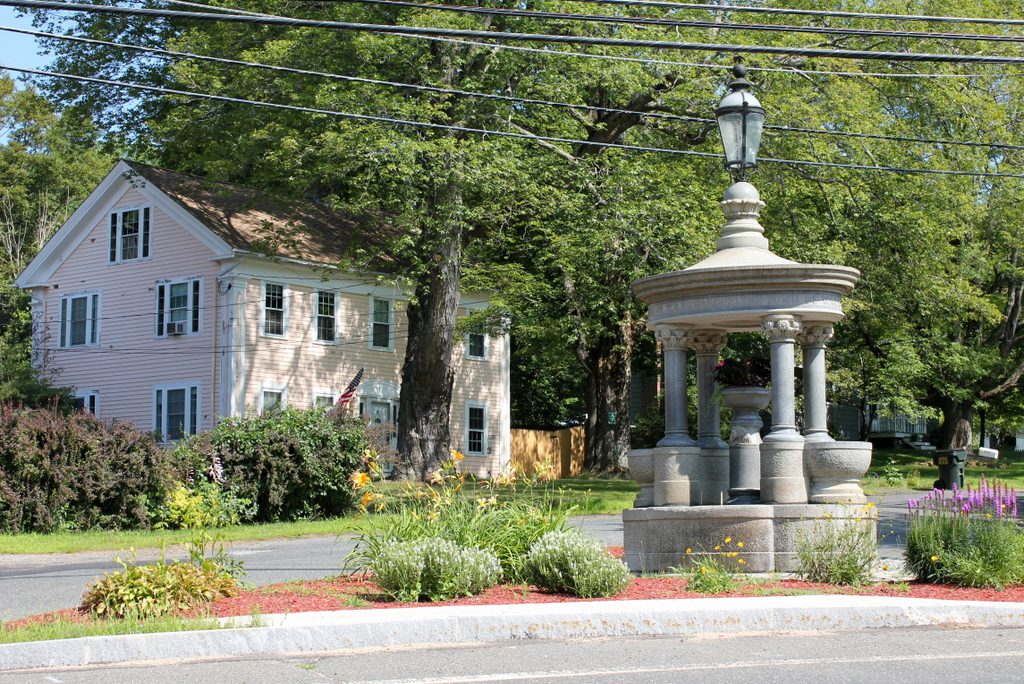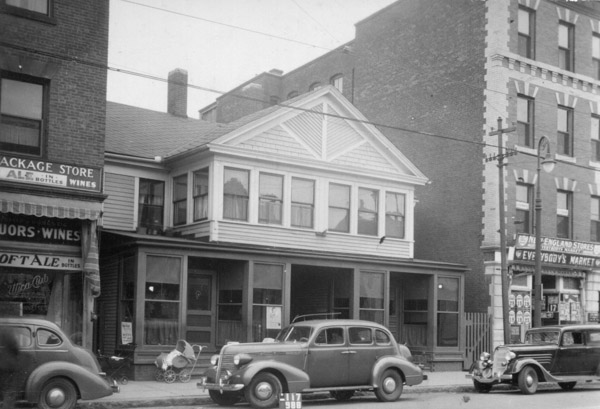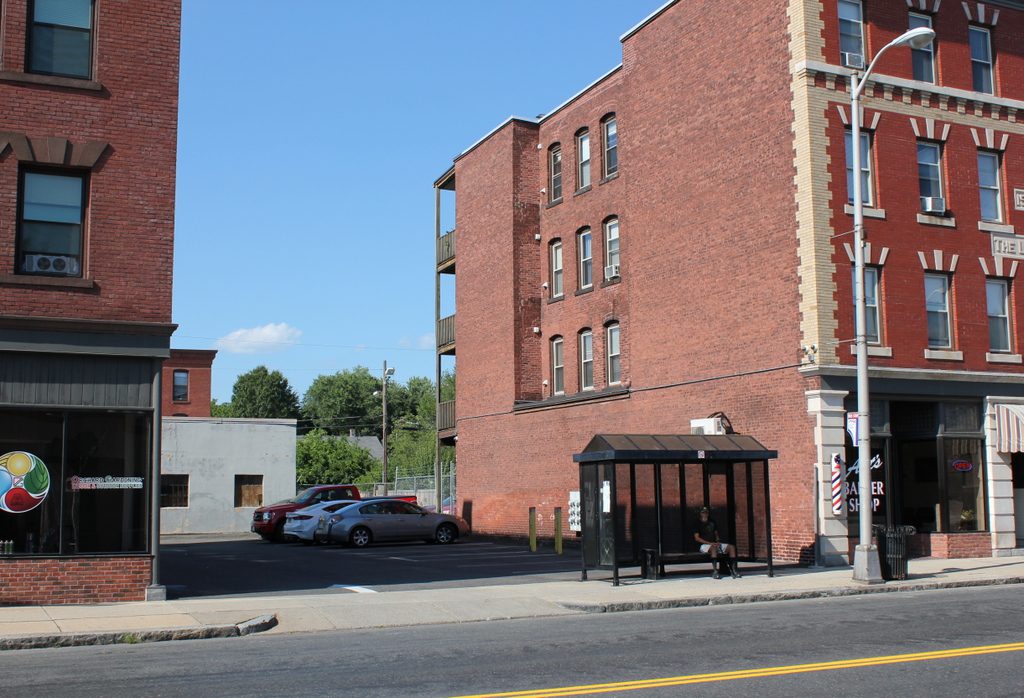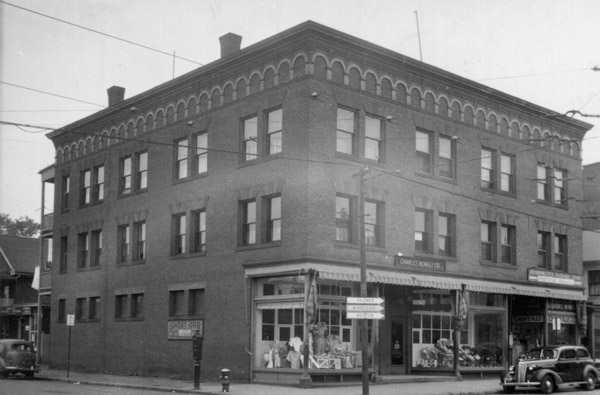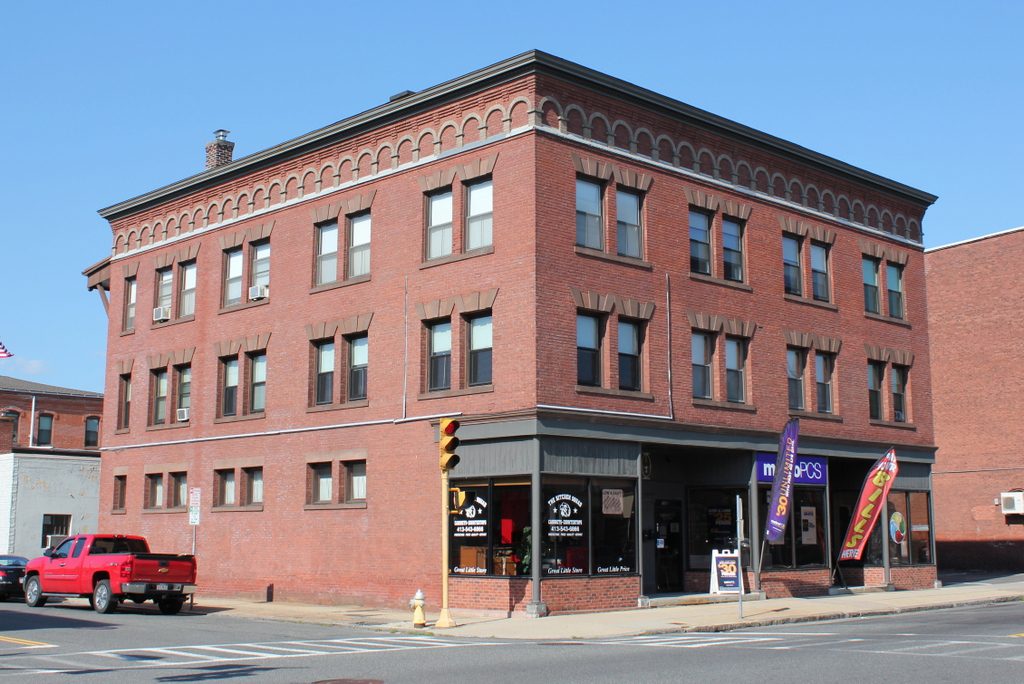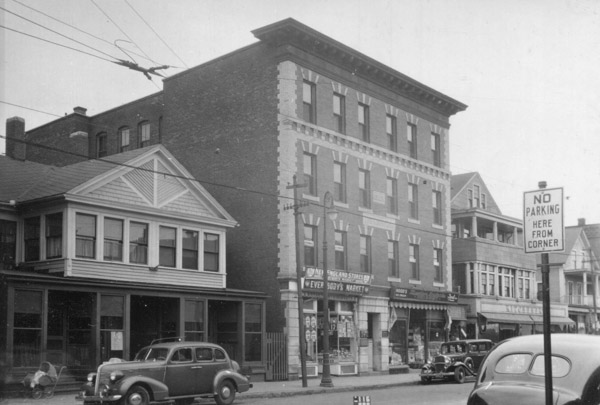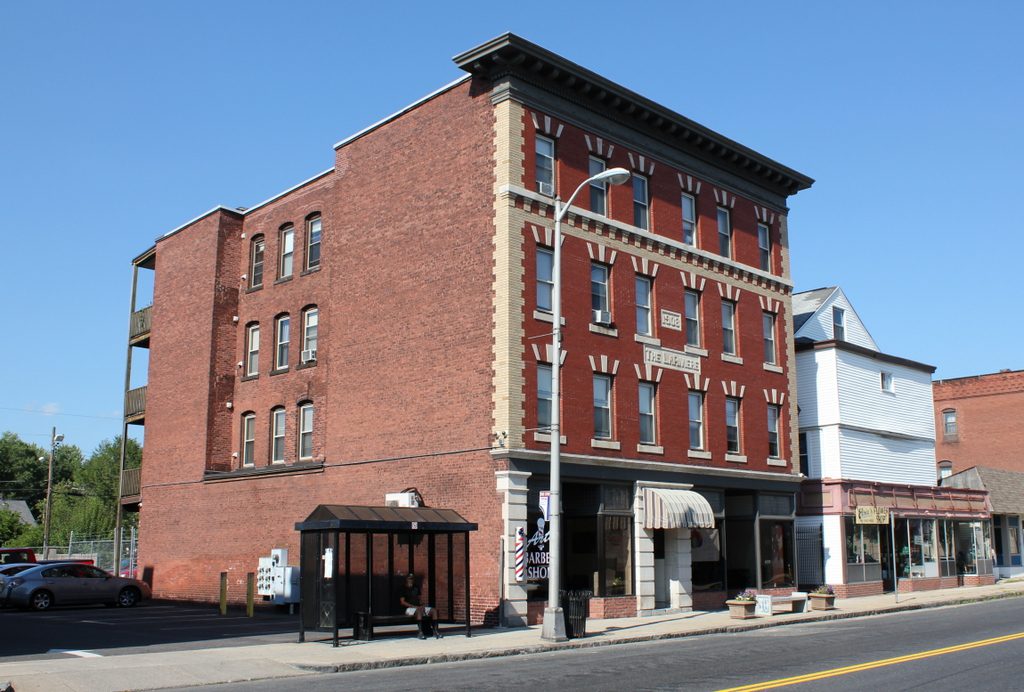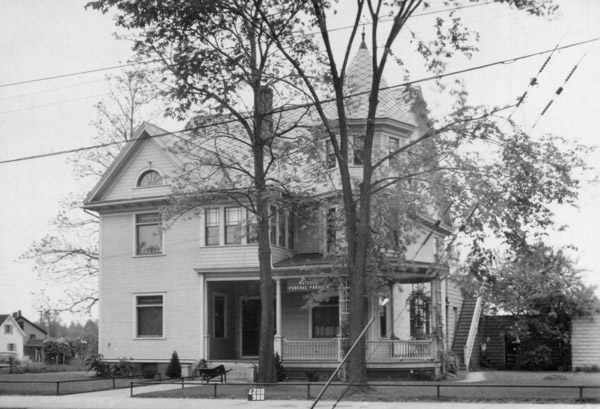The Wales Baptist Church on Church Street, seen in the distance from the other side of Main Street, around 1892. Image from Picturesque Hampden (1892).
The scene in 2017:
The present-day town of Wales was settled sometime around the 1720s, and was, at the time, a part of Brimfield. It was subsequently incorporated as a separate town in 1775, and was known as South Brimfield until 1828, when it was renamed Wales. As was the case across New England in the colonial era, the area’s settlement soon led to the establishment of a church. However while nearly all of these churches were Congregational, Wales was a rare exception. Its first church, formed in 1736, was Baptist, making it among the first Baptist churches in this part of the state. Other denominations would later establish churches here in Wales, but the Baptists would remain the predominant religious group for many years.
In 1802, the Baptists constructed a new meeting house on the southern part of Main Street, near the corner of Union Road. Along with the Baptists, the building was used by other denominations, including Universalists and Congregationalists, and it also served as the town hall. It would continue to be used as the town hall until 1965, and it is still standing today, but the Baptists moved out of the building around 1875, when they built a new church about a mile away on Church Street, which is seen here in the first photo. At the time, this area had become the town’s manufacturing center, and there were several woolen mills in the vicinity of the church, including one that was located just out of view to the right of the scene.
The first photo shows the church as it appeared around the 1890s. The town’s population had peaked about a decade earlier, with a population of 1,030 during the 1880 census. However, the town lost many of its manufacturing jobs by the turn of the 20th century, and the population rapidly declined. Within 30 years, the town lost two-thirds of its residents, with the 1910 census showing a population of just 345. Not until after World War II did Wales see significant growth again, and the town would not surpass its 1880 population until the 1980 census.
The early 20th century population loss hurt Wales’s churches, particularly the Baptists, who had built this large church building at the height of the town’s prosperity. They would continue to worship here until around the early 1930s, when the dwindling congregation joined with the Methodists, whose church was located a little to the south of here on Main Street. The Baptists later took ownership of the former Methodist church, and today the Wales Baptist Church continues to hold its services there, more than 280 years after the congregation was first established.
As the present-day photo shows, the old 1875 church building is no longer standing. It was evidently demolished at some point after the early 1930s, although the short, dead end road on the right side of the scene still bears the name of Church Street. Today, the only surviving building from the first photo is the house in the foreground, at the corner of Main and Church Streets. Built in the first half of the 19th century, this house later became the Wales Public Library in 1922, and it remains in use today. The first floor windows were altered during its conversion to a library, but otherwise it still stands as the only recognizable feature from the first photo.

